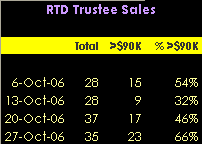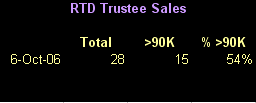This Week’s Market Perplexions
That the market continues to go up is perplexing. As I understand it, the market has four theses to support its strong rise: (1) the consumer is still strong; (2) the Fed is done; (3) in the event that thesis (1) is wrong, then corporations will fill the gap with cap ex spending; and (4) price to earnings ratios are low.
Generally, scientific method requires a (hypo)thesis to be subjected to the rigors of empiricism. Slap evidential matter data garnered to support your thesis against the wall of scientific skepticism and see if it sticks. I’ll offer my personal and amateur observations regarding theses 1-3. Thesis 4 has too many oddities. And there should be a Thesis 5, Global Growth (which really has some merit). But 4 and 5 make my head hurt, so I’m being lazy and cowardly in ignoring them both here. Warning: Remember, I’m representing my point of view (POV) as that of a layperson.
Let’s tackle thesis (1): The consumer continues to be strong. Here is Econoday’s Retail Sales report:
Released on 10/13/06 For Sep 2006
Retail Sales, M/M change
Consensus 0.2 %
Actual -0.4 %
Retail Sales less autos, M/M change
Consensus 0.0 %
Actual -0.5 %
Retail sales missed by a large differential from consensus expectations. In my off-line life, if I miss something by that wide a gap, then it’s an alert to me that my thinking was wrong. Slapping these numbers against our thesis wall result in a puddle on the floor. They don’t stick. But if they don’t initially stick, you can keep changing them and throwing them until they eventually stick. Here’s a lifting from Mauldin’s free letter which you can find here http://frontlinethoughts.com/.
“September retail sales posted a rather weak headline number. Expectations were for a rise of 0.3%. Mostly, the high expectations were because of the drop in gasoline prices. Economists assumed consumers would spend their energy "savings" on other items. The actual number was down 0.4%; and just as important, August sales were revised downward from 0.2% to a final 0.1%. It is important to pay attention to the direction of the revisions, as they will sometimes be a harbinger of trends.
So, are we finally starting to see a slowdown? Not if we look at the action of the stock market, which is again posting new 52-week highs as I write. Dow 12,000, here we come! And why can the market shrug off slowing consumption? Because the immediate spin was that the underlying data was really quite strong.”
Unpacking these numbers led to a number of “positive” increases. One such positive was that furniture purchases were strong (up 1%). Strange news to hear on the same day that that Lazy Boy warns.
There are other matters balled up into this consumer thesis that center on the role of housing, debt and negative savings. I’m not going to tease those out. But it seems to me that (1) the consumer has been on a spending spree and (2) the source of funds can come from two places, (a) income and (b) debt. Income increases have not been high enough to sustain the current level of spending, so that leaves debt. Given the proliferation of mortgage equity financing over the last few years AND given the pressures in real estate and the potential for price deflation, we could only be looking at incremental gains here. My conclusion is that the consumer will continue to flounder.
Let’s tackle thesis (2): The fed is done raising rates and will reduce them in the near term. There are a few Fed heads out there stating with continuing emphaticalness (yes, this is a word, and I think that it should be emphaticism, but alas it is not a word) that inflation is a worry—more of a worry than a slowing economy. There is a paucity of public discussion about real interest rates. I’m not qualified to host one here, but it’s a concept that deserves a brief airing. What are real interest rates?
Real Interest Rate = Nominal Interest Rate - Inflation
If inflation is positive, which it generally is, then the real interest rate is lower than the nominal interest rate. If we have deflation and the inflation rate is negative, then the real interest rate will be larger.
Source: http://economics.about.com/cs/macrohelp/a/nominal_vs_real.htm
Let’s say that our nominal interest rate equals the fed funds rate, currently at 5.25%. If inflation is 3.25 %, then our real interest rate is 2.25%. To slow inflation, one has to have a high enough delta between the fed funds rate and inflation to serve as a brake to the careening car we call our economy. Remember those folks (much maligned I might add) calling for 6% Fed funds rate? Those were the folks who understood that real interest rates were too low to forestall inflation. I would posit, then, that the thesis that the Fed is done, doesn’t stick when it is slapped up against a wall either. Two strikes.
To use baseball vernacular (and I’d rather have needles stuck in my eyes than watch baseball), I really need a strike three to achieve any sort of climax here. Strike three is thesis 3, In the event that the consumer stalls, corporations would step in and fill the gap.
There are not too many folks more fiscally conservative than corporate CFO’s. So I’ll ask you, that if you were a savy CFO and believed that the economy is slowing (less revenues, less profits), are you going to go on a capex spending spree to get rid of your excess cash? If you didn’t say no, I would surmise that you’d be out of your CFO position soon—but it would be a less ignoble departure than that of those CFO’s participating in options scandals. To maintain (or mitigate a slide in) profitability in a slowing economy your margins are pressured. Margins are pressured because sales dollars are down (due to volume and pricing pressure). If your top line is pressured, you don’t load up on depreciable assets.
I would welcome seeing some credible numbers on how these capex numbers are going to mitigate the consumer slowdown. I have a feeling that we’ll just vacillate between the camp saying that consumer is not slowing down (by spinning the numbers) to the camp that says yes the consumer is slowing down but corporate capex will save the day. I’m in the third camp—saying that both will defy the current expectations. But my camp is a lonely one.
So all of this “stuff” is perplexing. To be true to valuing empiricism, I have to ask how might I be wrong. Global growth would certainly be an answer. But this post is already too long. Though I’m tempted to say that the market has a mind of its own, the market has no mind. The market is really a shower faucet. The knob on the right is hooked to endorphins, and the faucet on the left is hooked to adrenalin. Right now I think the faucet on the right is wide open.
If you have a weak plumbing system (and I think that the market’s plumbing system is weak given the theses points) if you’re showering in a comfortable temperature, singing away until someone does something unexpected in another part of the house (starting the washing machine or dishwasher, or maybe flushing a toilet) you will experience an unwelcomed rapid change of temperature—you’re gonna be freezing or scalded—neither is fun.














